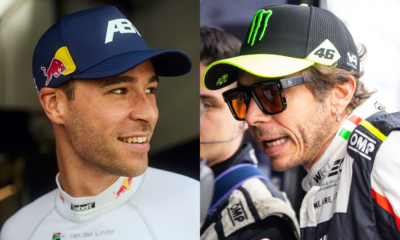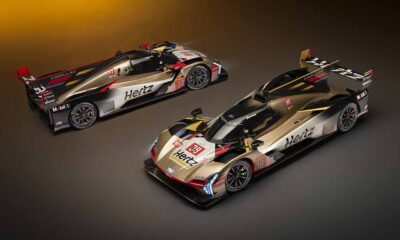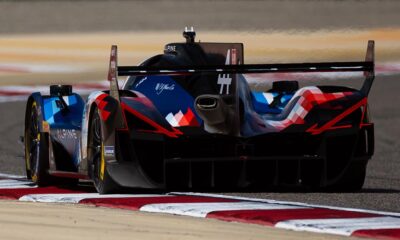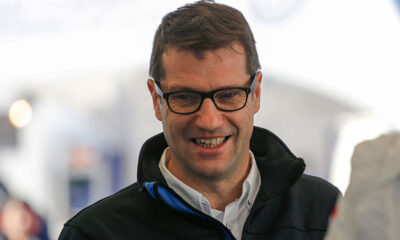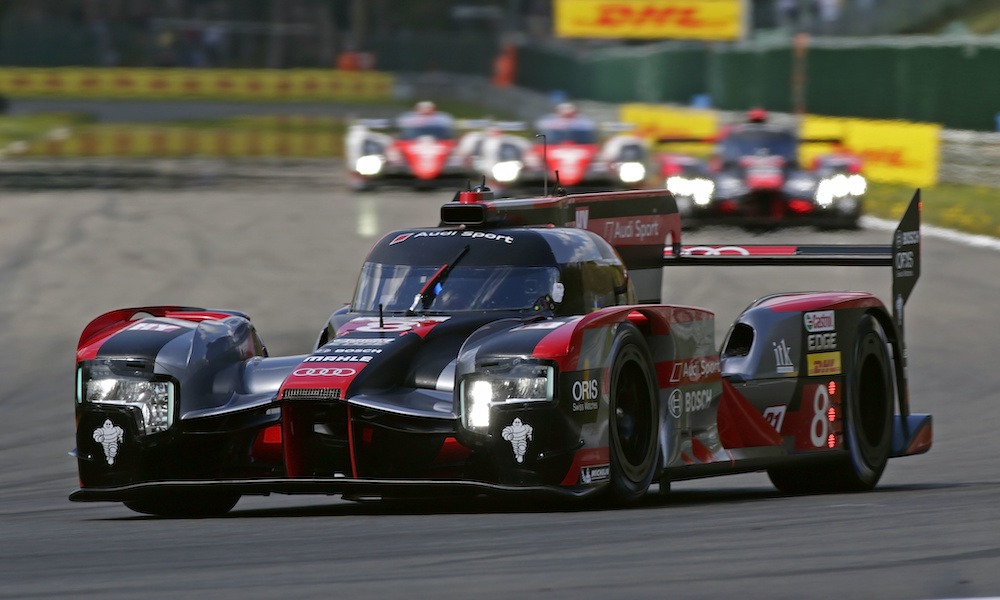
Photo: Audi
Spa-Francorchamps is fortunate and deserving to have been the host of two all-time classic endurance races: the 24 Hours and the 1000 kilometers.
The domain of prototypes, the 1000km or six-hour event is broadly known as the litmus test for 24 Hours of Le Mans form, but it’s also become a coveted title in its own right.
First run to its full distance in 1966, the race was held on the daunting 8.7-mile Spa road course until 1975. It returned on the shorter, revised layout in 1982 and continued until 1990 before another break of a few years.
The event was brought back once again in the late ’90s, at the dawn of the LMP1 era, and has since become an integral part of the FIA World Endurance Championship schedule.
In this retrospective, Sportscar365 looks back at five of the best-ever Spa sports car races, from the World Sportscar Championship, Le Mans Series and WEC.
2016 – Audi’s Penultimate Win
There were two fights going on during the 2016 Spa WEC race: one pitting the three LMP1 manufacturers against each other, and the other between them all and attrition.
Only one car – the Audi R18 e-tron quattro of Lucas di Grassi, Oliver Jarvis and Loic Duval – made it to the end without major issues and was duly rewarded with victory.
Unlike the previous year’s race in which Audi and Porsche had left Toyota behind, all of the marques in the top class had a shot at winning this contest.
Positions changed regularly throughout the first half of the race as the different LMP1 hybrid systems exhibited their contrasting strengths and weaknesses.
Toyota looked energized with its new TS050 Hybrid and the No. 5 car was operating strongly out front until its engine gave up with two hours remaining.
The sister Toyota also encountered problems, although little did the team know how much these malfunctions would pale in comparison to the mechanical heartbreak that was waiting around the corner at Le Mans.
Porsche had a quick package, but both of the 919 Hybrids encountered issues: the No. 2 spent the race without any hybrid power while the No. 1 suffered from two punctures.
This left the race to Audi, which had the slowest of the three cars in qualifying but was the only marque to keep a car completely out of trouble. Duval, di Grassi and Jarvis took the win, while Rebellion Racing finished third overall behind the hybrid-less Porsche.
There was drama elsewhere in the field too, as the leading Gianmaria Bruni/James Calado Ferrari ceded the win to its sister car after a late engine failure, while Signatech’s ORECA held off ESM’s Ligier in a thrilling battle to the end for LMP2 honors.
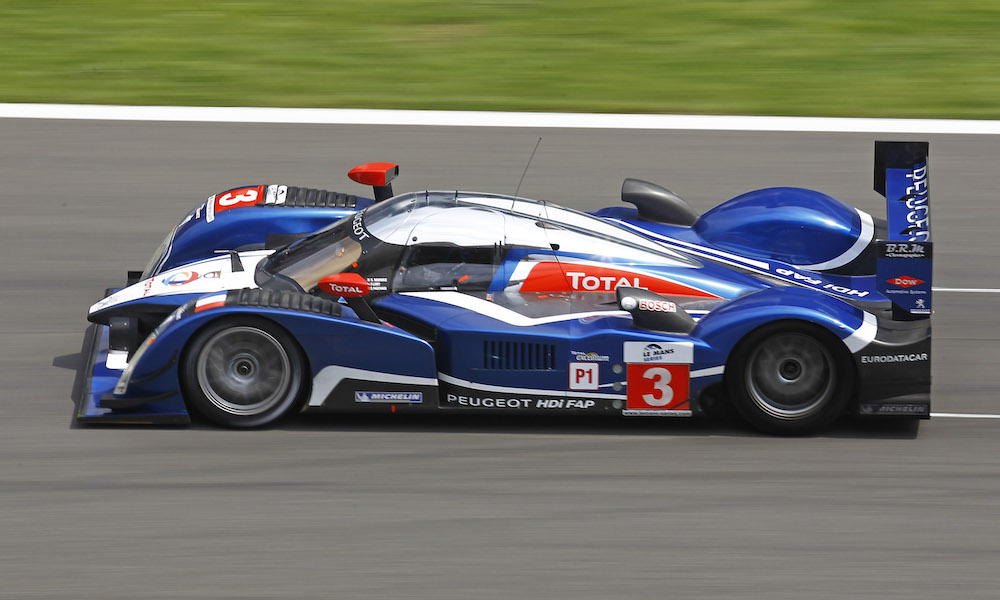
Photo: Peugeot
2010 – Peugeot Turns on the Power
Having finally conquered Audi at Le Mans in 2009, Peugeot kick-started the fourth year of its 908 HDi FAP program with an aggressive showing at Spa.
Despite skipping the Le Mans Series opener at Paul Ricard, the French marque was the favorite heading to Belgium: its weekend-specific high-downforce aero setup held a natural edge over the Audi R15 TDIs that were in Le Mans-style low-downforce mode.
However, unpredictable weather and some faster-than-expected Audis made this a much more even-handed bout between the LMP1 factories than had been expected.
The downforce differences turned out to be trivial on a hectic race day charged by intermittent drizzle, plenty of incidents and a bizarre power cut that resulted in a mid-race red flag.
All of these dramas enabled Audi to keep sight of the quicker Peugeots and, by the final hour, the lead R15 of Tom Kristensen, Allan McNish and Rinaldo Capello was in striking range.
Audi chanced in the final hour with Kristensen running second to Simon Pagenaud: the R15 was equipped with intermediate tires to reflect the latest spate of rain while Peugeot opted for slicks.
This helped Kristensen in the short-term and the Dane was on course to catch Pagenaud – who shared the 908 with Pedro Lamy and Sebastien Bourdais – until the weather suddenly cleared again.
This allowed Pagenaud to clear off, while Stephane Sarrazin (whose car had recovered from a hard crash at Blanchimont earlier on) caught up with Kristensen to secure a Peugeot 1-2.
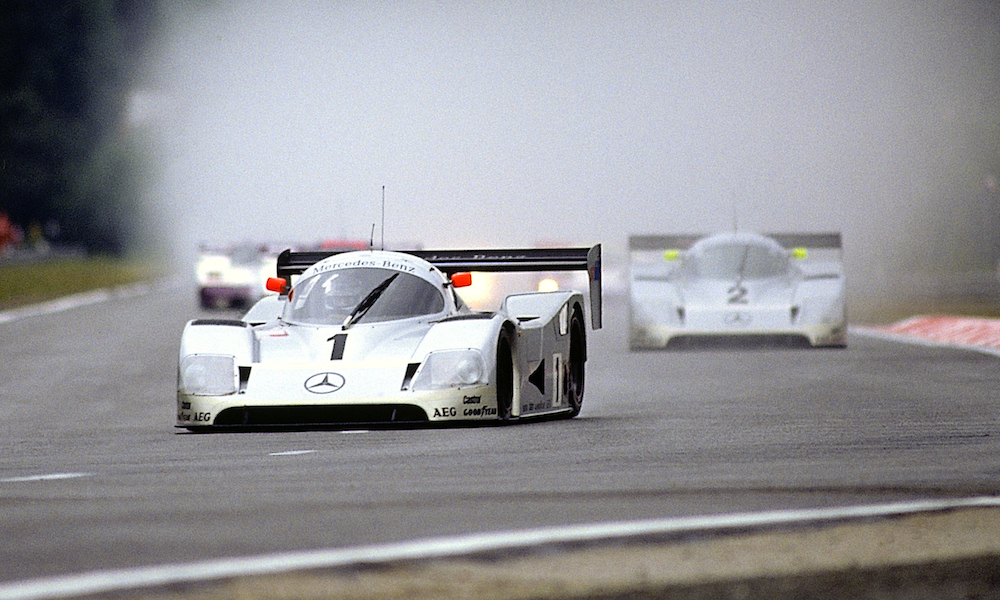
Photo: Mercedes
1990 – Mercedes Victorious in Wet and Wild Sprint
For two years, the race distance of the Spa World Sportscar round was reduced by more than half to 480km, throwing up some interesting new strategy variables.
The condensed format was best-exhibited in the second such race in 1990, which featured a three-way tussle between Mercedes, Nissan and Jaguar in the top class.
Mercedes qualified first and second with its Sauber-run C11 prototypes driven by Mauro Baldi/Jean-Louis Schlesser (No. 1) and Jochen Mass/Karl Wendlinger (No. 2).
The Silver Arrows asserted themselves out front in the wet opening stint, but the rain wasn’t hanging around and a dry line had started to give the teams food for thought.
Jaguar brought Martin Brundle in for slick tires in a bid to make up some ground to the Mercs, and this move paid off as the Englishman scythed back through the field.
Brundle overtook Schlesser for the lead at Bruxelles and looked set to reclaim the Spa crown for Jaguar after two consecutive Sauber triumphs, only for his Silk Cut XJR-11 to grind to a halt just before Stavelot with an oil leak.
Schlesser’s car had also hit mechanical trouble and lost ground, leaving Wendlinger out front to defend from the sister Jaguar of Andy Wallace and Jan Lammers, and the Nissan R90CK of Julian Bailey and Kenny Acheson.
The result marked the start of a six-race winning streak for the Sauber Mercedes team, which went on to comfortably defend its World Sportscar Championship teams’ crown.
#Porsche #RennPorsche 🏆 pic.twitter.com/gI24hhxTnU
— 🏁 #RennPorsche 🏁 (@RennPorsche) September 15, 2017
1986 – Boutsen Honors Brun Teammate Bellof
In 1985, German star Stefan Bellof lost his life in a violent accident at Eau Rouge whilst driving a Porsche 956 run by Brun Motorsport.
Twelve months later, Bellof’s co-driver for that race – Belgium’s Thierry Boutsen – eked his Brun-entered Porsche across the line less than a second ahead of Silk Cut Jaguar driver Derek Warwick to claim a fitting (albeit slight) tribute victory.
Both Boutsen and Jelinski were eager to do perform Spa considering both had retired from the 24 Hours of Le Mans three months prior in separate Brun Porsches.
Boutsen put their Jägermeister-liveried 962 on pole and led the opening stint, before handing over to Jelinski who held off reigning world champion Hans Stuck in one of the Rothmans machines.
Thi was exciting enough, but it was at the end of the race when the action peaked. Boutsen, back in the Brun car and completing the lion’s share of the load, was leading from Stuck and Warwick but all three were running a fine line on their fuel loads.
It quickly turned into a game of who had the lightest foot and it appeared Warwick would win: the Jaguar driver eased past Stuck and was right behind Boutsen on the final lap.
The Englishman was practically alongside his rival heading into the final corner at La Source, but Boutsen had just enough left to nurse his Porsche across the line ahead.
This secured a memorable win for Brun, although only just: at the time, Motor Sport magazine reported that all three front-running cars had conked out before reaching Eau Rouge, barely a hundred yards on from the finish line.
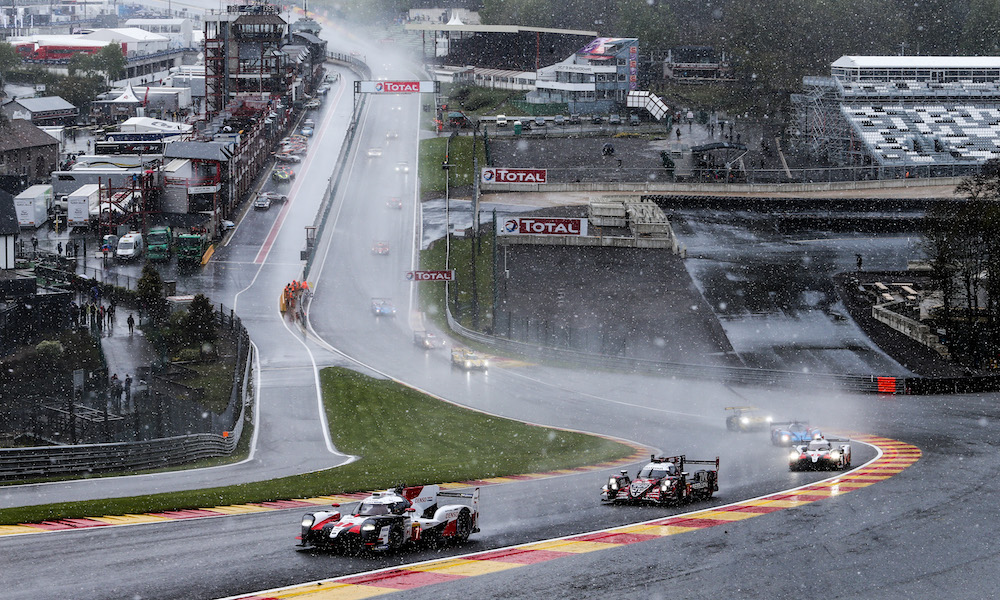
Photo: James Moy/Toyota
2019 – A Different Type of Endurance
Spa is loved and dreaded for its erratic microclimate, but few could have predicted that this little pocket of the Ardennes could produce such fitful amounts of variation in one six-hour period until the WEC visited last year.
Teams and spectators walked into the circuit on race day underneath crisp, blue skies.
When they left, they were soaked through and frozen having been subjected to a series of punishing bouts of hail, snowfall and chilling gales.
Their silver lining, bar having a great survival story to tell, was that they had been treated to a fantastic endurance race that had tested both the drivers’ track talents and on-the-fly decision-making skills of the pit crews to the limit.
Toyota won, as it was always likely to do with the dearth of LMP1 manufacturer competition, but the race between the two TS050 Hybrids was still an intriguing affair.
The car driven by Mike Conway, Kamui Kobayashi and Jose Maria Lopez had the measure of its sister machine throughout the race, until a sensor issue forced it to reluctantly renounce the win to Fernando Alonso, Sebastien Buemi and Kazuki Nakajima.
The GTE-Pro battle was the best of the four classes as Ford, BMW, Ferrari, Porsche and Aston Martin gladly knocked seven bells out of each other whatever the weather.
Aston came out on top with local expert Maxime Martin anchoring home a drive shared with Alex Lynn, while the top five places went to cars from each of the five marques.
There was also an indomitable drive from F1 refugee Pastor Maldonado resulting in an LMP2 win for DragonSpeed, while remarkably none of the 34 entered cars retired.
Honorable mentions
These other notable Spa 1000km races could also have been included in our list:
1966 – Parkes and Scarfiotti win for Ferrari, beating the Ford GTs
1970 – Redman/Siffert Porsche 917 defeats Surtees/Ickx Ferrari 512
1974 – An unexpected win for Bell and Hailwood’s Gulf Mirage-Ford
1984 – Bellof and Bell head home an iconic Rothmans Porsche 1-2
2015 – Audi beats Porsche in an epic duel between the hybrid heavyweights


















